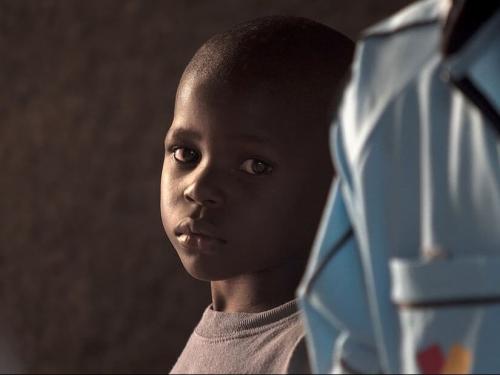In the technicolorized version of the film Imitation of Life (1959) about racial passing and white supremacy, Annie Johnson, a Black housekeeper, asks a rhetorical and existential question of Miss Lora Meredith, Annie’s white employer and mother of a white daughter. Referring to her Black daughter Sarah Jane, who passes for white, Ms. Johnson says, ‘How do you tell a child that she was born to be hurt?’ While this film is melodrama at its best, Annie's sentiment captures Black parenting and Black guardianship and its inability to protect Black children and families from systemic racism. It further underscores the fact that adult racial politics deny Black children their humanity and the luxuries and privileges granted white children and white childhood.

Whether through the adultification of Black children or the erasure of Black children’s experiences altogether, representational and physical violence against Black children in cartoons, commercial ads, games and picture books mirrors manifestations of racial violence against Black adults. Such racialized physical and representational violence denies humanity to Black people more broadly, adults and children alike. Within the contexts of US history, children's literature and popular culture, the invisibilization of Black children is yet another social injustice under the colonial white gaze. This invisibility includes the exploitation of Black children in poverty porn as well as Black children’s experiences with ‘curriculum violence’ in problematic classroom pedagogies across the USA.
Our Identities article, ‘Beyond physical and representational violence: the violence of Black children’s invisibility in public spaces’, reveals the inextricable connections between social justice, Black children and adult racial politics. Against this current US social and political backdrop of anti-CRT and anti-DEI movements is the fact that constructions of children and childhood cannot be separated from the current US anti-oppression backlash since the alleged global ‘racial reckoning’ following George Floyd’s May 2020 murder.
The well-documented adultification and erasure of Black children in literature and popular culture centre Black children at the nexus of US adult race politics. Children’s picture books, games, toys, news stories and other material and popular culture demonstrate that the invisibilization of Black children mirrors the invisibility of Black adults, fundamentally connecting DEI efforts with humanity and justice.
While white children are protected in much the same way that white women are protected under the gaze of white cisheteropatriarchy, Black children are exempt from and not afforded this social, historical and political luxury. Considering the myriad instances of Black children’s figurative invisibility, our article takes as its centrepiece social media instances of Black children being ignored, passed over, physically waved away, or even knocked down by white adults and amusement park character actors. Such attacks on Black children are inherently violations on Black families and communities.
Our article challenges readers to consider the ways in which, in the words of civil rights activist Ruby Bridges, whose young life at six years old was thrust into the violent and threatening world of adult racial politics during 1960s desegregation in Louisiana, ‘Racism is a grown up disease and it is time we stop using kids to spread it’.
Read the Identities article:
Lester, Neal A. & McNeil, Elizabeth. (2024). Beyond physical and representational violence: the violence of Black children’s invisibility in public spaces. Identities: Global Studies in Culture and Power. DOI: 10.1080/1070289X.2024.2367897